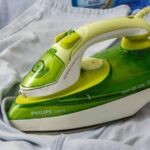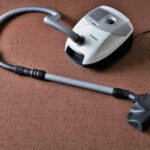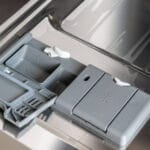A microfiber mop is my first choice for a cleaning tool. Besides getting the job done quickly, it is thorough, highly versatile and more effective in relation to use of cleaning products.
I use my microfiber mop for cleaning and dusting. It serves me well in both regards and I would not trade it for any other type.
If you do not have one and your house features wooden, tile or laminate floors, I recommend you do but first, learn to use a microfiber mop properly.
How to use a Microfiber Mop for Dry & Wet Cleaning
How you use your microfiber mop will largely depend on whether you intend to dry (dusting) or wet clean. All the same, the basics are similar.
If you intend to wet clean your room, skip to step 5
What You Will Need
- Microfiber mop
- Sink (optional)
- Microfiber mop bucket (optional)
- Cleaning agents (optional)
- Water (optional)
Instructions
Step 1. If you intend to dust your room, begin by attaching the microfiber pad to the mop head. Use the pad that is specifically meant for dusting if your mop came with it. Dusting pads are excellent for trapping dirt because they are mostly electrostatic. If your mop does not have one, worry not! The pads you have are designed for multipurpose use. They are just as effective at collecting dust, pet hairs, crumbs and all other particles.
Step 2: Adjust your mop’s handle to ensure that the height is appropriate for you. The goal is to ensure that your body achieves the right posture when getting the job done.
Step 3: Begin dusting from the furthest corner of your house. Use the swivel feature to remove dirt from hard to reach places. Move the mop in such a way that you do not push dirt back to an area that you already cleaned. Also, make sure that you do not step on places that you have already cleaned before the entire room is dusted to avoid leaving footprints.
Step 4: Once the room is completely dusted, gently remove the pad from the head and transfer the dirt to the dustbin.
Step 5: Take a clean microfiber pad and use warm water to wet it in the sink. Alternatively, add water to a microfiber mop bucket and wet the pad. You can also add cleaning agents to the water before dipping in your mop. However, you mostly do not require cleaning agents when using a microfiber mop.
Step 6: If using the sink, wring the pad with your hands until it is damp. Do the same with the wringer if using a microfiber mop bucket.
Step 7: Attach the pad to the head and begin mopping from the farthest corner of your house. Ensure that you move the mop in such a way that dirt is not pushed back to areas that are already cleaned. Just like with dusting, use the swivel feature to reach under the sofas, chairs and cabinets. Rinse out excess dirt from your pad if need be and continue cleaning until the entire house is in perfect condition.
Step 8: Once done, take the pad from the mop head, rinse out excess dirt and if need be, clean it thoroughly in the washing machine.
Tips for Using and Maintaining a Microfiber Mop
A good microfiber mop is an investment that can save you time, unnecessary costs for expensive cleaning detergents and back pain. Accordingly, it is important to use and maintain it properly.
- Firstly, always use the pads as instructed by the manufacturer. Ideally, some mops come with multipurpose pads whereas others have separate pads for dusting and cleaning. Using a pad for its intended job keeps your cleaning process simple and time efficient.
- Avoid heavy cleaning detergents. The good thing with microfiber mops is that you do no need to use cleaning detergents at all. Accordingly, use mild products only when the need arises. Heavy detergents can make the cleaning process unnecessarily lengthy since they have to be rinsed out thoroughly. Secondly, they have the potential to clog the dirt trapping spaces in your pads.
- If your house is in a completely bad condition, dust before wet mopping. This will make the wet cleaning process easy because you will not need to pick a lot of debris.
- Mix your microfiber pads with the right types of fabrics when washing. Microfiber pads can easily pick lint from other fabrics. Therefore, it is important to wash them separately or with fabrics that are lint free.
- Avoid machine-drying your microfiber pads. A dryer uses heat that can damage microfiber. Choose the air drying method because it will keep your pads in good condition for a longer time.
- Lastly, do not let your pads come into contact with bleach or fabric softeners. The former can cause fading whereas according to microfiberwholesale.com, the latter clogs microfiber.





